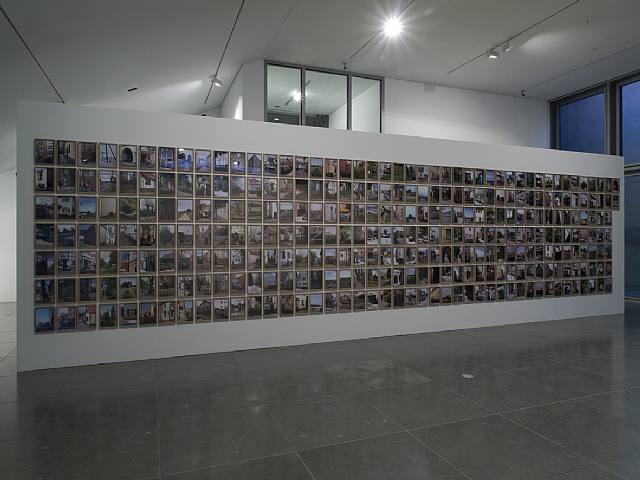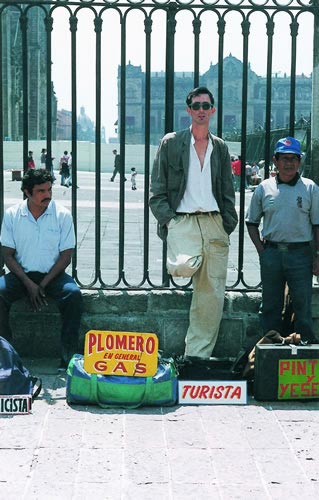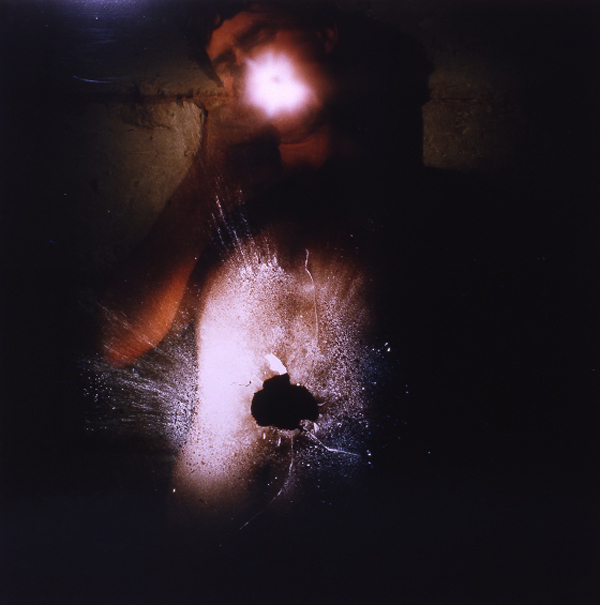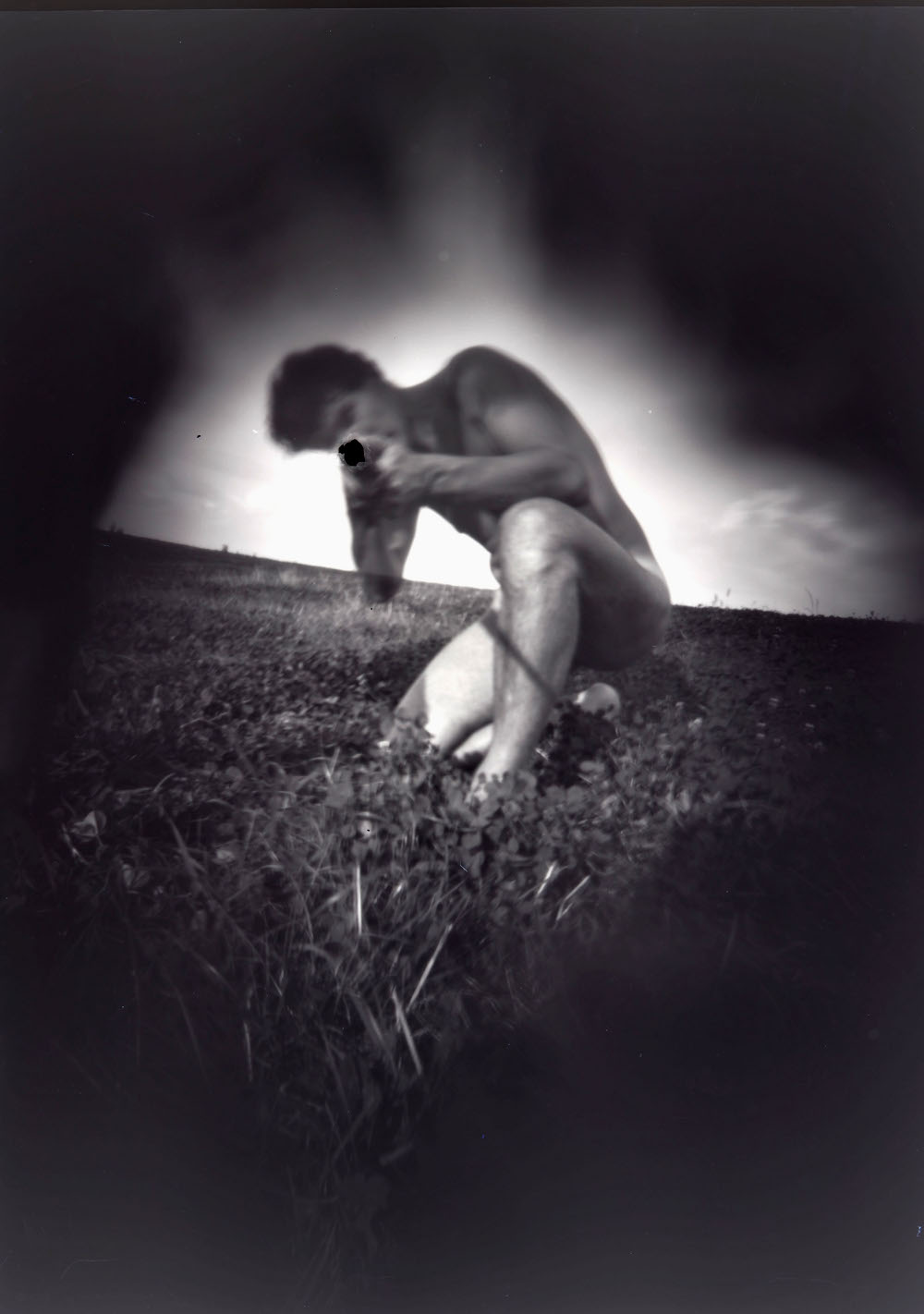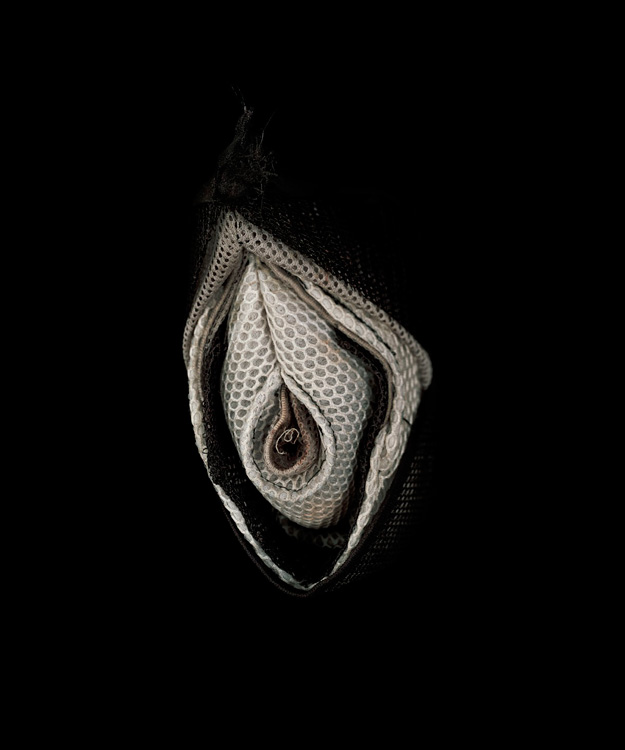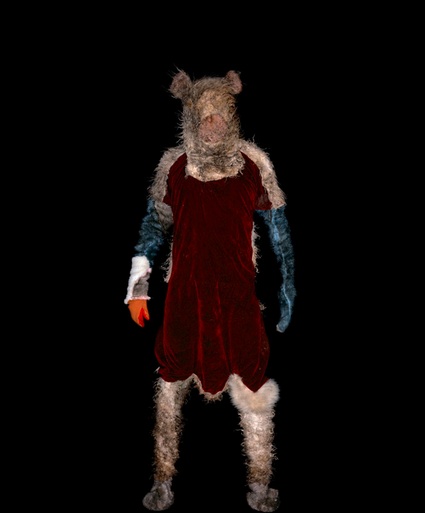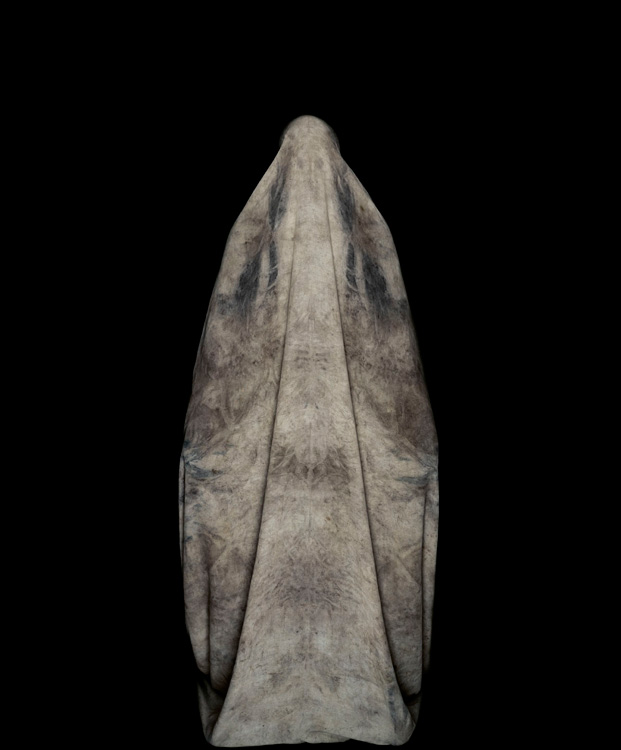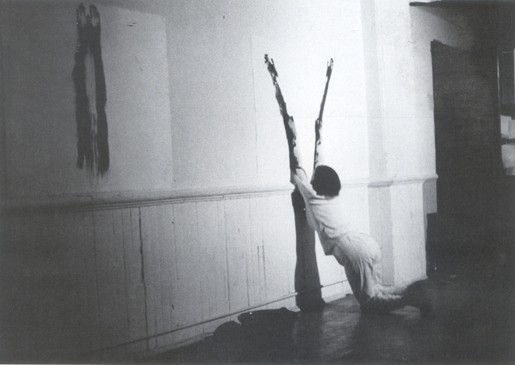As part of HU’s ongoing series of critics talking about art and criticism, I’m reprinting an email conversation between myself and artist and critic Bert Stabler. We start off by talking about Marxism and Christianity, but if you stick with it, we make our way over to art (garfunkel) partway through.
If you don’t blink, you’ll see comics get sneered at a couple of times too.
_______________________
Bert: Random conundrum… I know Eugene V. Debs is one of your favorite punchlines. Did you know about Jane Addams passionately condemning the Pullman strike? Do you have any thoughts on that, now that you’re feeling sympathetic toward teachers’ unions?
Noah: I didn’t know that about Jane Addams. I don’t know much about her. Checking Wikipedia quick, I see that her father was a banker, though, which makes her anti-union sentiments not all that suprising….
Bert: I ‘m deciding to suck on the idea of non-revolutionary radicality as a coherent thing, if it is. Nonviolence is clearly a great solution (especially when you have a strong central government and TV), but Eugene V. Debs was certainly not opting for that, which Jane Addams was deploring him for, as an ultra-pacifist.
In one sense, Jane Addams is Obama and Debs is a Tea Party protester. In another sense, Debs is an isolationist and Addams is a free-trade advocate. It’s definitely a great example of the materialist-pragmatist split I’ve decided to harp on as the key divide of liberal democracy.
Noah: That’s interesting that Jane Addams was sticking to pacifism. Debs actually went to jail as an opponent of WWI — though he wasn’t a pacifist in all situations, obviously.
You can also see it as part of the ongoing battle between marxism and feminism….
Bert: Well, a pragmatic Marxist is a democratic socialist, and a materialist feminist is (often) a psychoanalysis-ist, but it’s obvious that neither precludes pacifism. Bertrand Russell was a pacifist too, and he was as materialist as humanists come (bowing before the altar of math is absolutely the variety of gnosis materialists favor)– his association with Whitehead and Wittgenstein must have frustrated him terribly.
Materialists and pragmatists can disagree about desirable outcomes, but means and meaning are likely to be strikingly different. That’s why Marxism really is never capitalism by other means– it’s freedom through law rather than outside of it.
Noah: I think Marxism and capitalism are maybe closer than you’re allowing for here. I think there are materialist capitalists — which I take to mean ideological capitalists, at least to some extent. The invisible hand isn’t that much different than the impersonal forces of history. I think C.S. Lewis would see both as giving up your will to the demonic, essentially. Putting your faith in material processes is putting your faith in material processes. Whether or not those processes are supposed to work through freedom or dialectic doesn’t necessarily make that much difference.
And on the other side…it seems you could fairly easily be a pragmatic Marxist — someone like Gorbachev, basically, working within a Marxist system but who didn’t want to be all ideological about it and hoped to basically make things better by getting them to function better. Or there’s China — lots of pragrmatic marxists there, yes?
I wonder if the pragmatic/materialist vibe you’re seeing is more pragmatic than materialist in origin. That is, capitalism throws up a lot of folks who are pragmatic because, well, they’re in power, and folks in power tend to be more interested in manipulating power than in ideology.
Bert: Capitalism is pure ultra-organized de-ideologized biopower. Chinese capitalists and Russian capitalists just aren’t real Marxists. Hardcore American conservatives– Sarah Palin, Francis Fukayama, that fairly smart pastor who ran for President– don’t believe in modernity. They believe in a halcyon era without all these competing cultural narratives. Their urge to dismantle the central government is a negative response to biopower. It’s neo-agrarian retrenchment, just like Mao.
C.S. Lewis is a Christian materialist, and, like all materialists, he’s a pessimist. In a sense all materialists are conservatives, but calling Marxists conservative kind of stretches the definition of the word. He deplores modernity for its ruthless worship of power, which is certaily how Marxism can seem from the outside.
But Marxism is not nihilistic, capitalist, or pragmatic. Marx loves capitalism, make no mistake. But there is no reason the workers should take over, except– they just should, damn it! They do all the real work, they shovel shit, they are the last that are to be first according to, well, the Christian tradition.
Dialectics are, other than being a description of the magical astrophysics of history, a pale imitation of the invisible hand, despite being more elegant. Hegel is much closer to Kant’s moral law, which Lewis loves.. a real solid thing– the spirit as a bone. The invisible hand isn’t really a concept at all, it’s just a throwaway line. Capitalism knows that all language is a transparent game, a marketing ploy– you can write rambling psychotic poetry about it if you want, or you can just get a job and claim what’s coming to you.
Eschatology is the materialist core of Christianity– the present is in flux, but the future is solid. And this element is in capitalism– it can market the hybridity, the expansion of decentered homogeneity. it promotes, but it can also market the exact opposite. Capitalism doesn’t care. In a way, Christianity is proposing tangibility as existing exclusively outside of lived immaterial reality. Immanence isn’t tangible- only the infinte really exists. The Kingdom of God. But this is Caesar’s world here and now, which deserves our patronage but not our respect.
Noah: I think that’s right about Christianity; the world is worthwhile because there’s a real outside it that exists. I guess if you go far enough that way you get gnosticism.
There is a way in which Marxism is more like that than like capitalism; there’s a belief in something that’s real (the revolution.)
At the same time…there are people who really believe in capitalism. I wonder if Milton Friedman can get into heaven just like the people who sincerely worshipped the vulture headed god in Narnia? Or are you saying that you can’t actually belief in capitalism in that way?
Bert: You’re going to get gnosticism either way, of a sort. Capitalism offers a final referent– all outlooks and experiences are valid insofar as they are “cashable”– a term William James used as philosophical terminology. Or perhaps, as long as they promote “buy-in” to the larger project of individual striving. Absolute knowledge is outside any one experience, but is manifest in a thousand professional specialites. Milton Friedman just slapped a label on this, “neoclassical economics,” and his professional specialty threw Nobel Prizes at him. As opposed to Adam Smith, who probably had to have someone else brand his genius for him after the fact. Tautologies are the only arguments pragmatists can make, like a bunch of sparks that can’t make a circuit. Beliefs are anathema.
Whereas in materialism, tautologies are anathema. As you suggest, there is a hidden authority, a genuine thingness, lurking beneath and beyond the everyday, in the more perfect past from which these mere shadows were spawned. But the true scholar can hermeneutically divine essential being.
People combine these all the time, perhaps everyone always. But it’s a major source of hypocrisy, slippage, differance, however you like it. Being pragmatic and being material seem equally transparent. They are both branches of humanism. And they both only (but continuously) allow the supernatural in bracketed forms.
Noah: There’s something profound about the fact that there is no actual Nobel Prize in economics; only a simulacrum created by bankers. The soul doesn’t exist, but the body is created by money, and that ends up being the same thing to everyone but dyspeptic cranks. I mean, Milton Friedman I’m sure felt more validated by getting a banker’s money than he would have by receiving the philanthropy of some guilty do-gooder.
Bert: Milton Friedman creates theories about how it is inevitable that a corporate-academic state infrastructure will pursue its self-interest by not interfering with its own free desire to congratulate Milton Friedman for theories such as this.
Noah: What about a caveat “unless evil uinons interfere”? Isn’t there something like that?
Bert: Closer to your sphere of interest, I just read this Matthew Collings thing in Modern Painters about how the Turner Prize (the big British art award) is going to second-rate hack entertainers instead of real artists who have been dead for half a millenium like Fra Angelico.
The classical-standards-of-beauty argument is like the forces-of-history or the nature-of-drives or the power-of-math arguments. It’s materialist, it’s pessimist, it’s always backward-looking. It’s somewhat impossible to be a critic (or a philosopher) and not be caught up in materialism, even if the critic is mouthing all sorts of statements about “effective” and “successful” art (or truth, or therapy, or politics). In fact, I admire Matthew Collings for straightforwardly doing what a critic does– offering a standard in plain, fluent, and even amusing terms. And, in the end, that’s what he’s banking on, to give him his edge in the marketplace of ideas, which does undermine his materialism to some degree, Language is frustratingly imperfect and ultimately should be unnecessary for materialists, whereas it is disposable and superfluous for pragmatists.
At the same time, it’s naked hypocrisy dressed up as plainspoken wisdom (a handy definition of ideology, perhaps)– if Collings’ only positive example is a Renaissance painter (with some grumbling token acknowledgement of Chris Ofili), it seems quite possible that his standards are not actually objective. As with this guy Bret Schneider on the dismal Chicago Art Criticism blog, who writes at staggering length about the aesthetic bankrupcy of relational art practice (and, while we’re at it, contemporary sculpture), with no structural insight whatsoever, there is just no firm foundation for big general complaints about the relentlessly capitalist cultural milieu without some kind of appreciation of what it is that art is supposed to be doing now. All art now is conditioned on the fact of art being absolutely anything. And really, the least attractive responses to that situation are generally the conservative ones– cf. my broad general complaints about fine art photography.
Noah: Ideology doesn’t have to be plainspoken, though. Marx writes ideology, but it’s not necessarily framed as plainspoken wisdom…. Same with any economic thoery, really. Or much theology.
“All art now is conditioned on the fact of art being absolutely anything. ”
I think this is true of visual art, maybe. Other things (comics, books, even film) much less so. I mean, there aren’t any laws about what art can or cannot be, but there are historical expectations about materials, context, even subject matter. And those expectations tend to have ideological components which you can contest or not. I think it’s perfectly reasonable to look at photography and say, in general this medium does this and that and the other and I don’t like that for this reason or that reason.
I mean, you’re not saying photography isn’t art. You’re saying it’s bad art. I guess you could argue that since there’s not really any agreed upon actual value in the arts, then distinctions like good and bad don’t make sense — but then that leaves you merely talking about utility or other pragmatic concerns…or not talking about anything at all, I guess.
Bert: My whole argument about Fine Art Photography (not all photos– quite the contrary) is that it’s tethered to classical painting ideals, technology fetishism, and exploitive sociological tropes in order to validate itself in the anarchic ocean of photography in the unwashed techno-universe. Art has to represent its context, and representing by repressing is generally quite unattractive– as is the case with literary comics, which are all about not being comics while being comics.
I’m not talking about utility, I’m talking about pleasure– which has surprisingly little to do with attempts at metaphysical content.
And Marx is absolutely writing ideology, insofar as he is saying this and that are scientifically valid claims about society, which is a load of hooey, versus this and that are worthwhile principles on which to organize society, which has more than a little merit. This can basically be extended to other forms of modern writing– it’s just crystal clear in Marx and Freud, both of whom I admire.
As you suggest, a real utility argument isn’t really even an argument. It’s a true/false hypothesis and thus pointless to speculate on.
Your “like this for that reason, like that for this reason” approach is absolutely pragmatist. Nothing has to cohere– as long as the argument is elegant, functions on its own terms. My approach is always somewhat mired in materialism, on the other hand, because I want to suggest some larger picture– that’s a limitation I’m trying to deal with somehow.
Noah: Okay, two things.
First I got a little confused earlier. You said:
“All art now is conditioned on the fact of art being absolutely anything. And really, the least attractive responses to that situation are generally the conservative ones– cf. my broad general complaints about fine art photography.”
I thought you were saying that your complaints themselves were conservative, and therefore unattractive (it seemed odd for you to be dissing yourself in that manner, but not impossible or anything.)
Anyway, I think it’s kind of an interesting confusion. To the extent that you’re right and art can be anything, then any negative response ends up being conservative; an effort to proscribe the jouissance or to sit in judgment on the gay utopia. I see what you’re saying in general — if anything is possible, then you should take advantage of that, not hanker after a past when fewer things were possible. But…that starts to look like a fairly pragmatic argument, doesn’t it?
I guess the question is, if art can be anything, what’s the point of criticism? From your material standpoint, it seems like art is too amorphous and empty and, ultimately, predicated on and redolent of capitalism to really even bother with. Whereas, from a pragmatic standpoint, it’s use is in its existence, and arguing about whether it’s good or not is pointless (except for the phatic pleasure of argument itself, of course.)
I think that ties in with your point here:
“Language is frustratingly imperfect and ultimately should be unnecessary for materialists, whereas it is disposable and superfluous for pragmatists.”
You could substitute “art” for “language” there, right? Christians or Marxists shouldn’t need art, ultimately (except as a mistrusted venue for propaganda or apologetic), whereas pragmatists don’t need art except as another exchangeable commodity. For materialists, only the meaning matters, in which case you should say what you mean and not dump it in this odd container; for pragmatists, only the form matters, so you’re reduced to figuring out whether it “works”, i.e. “sells”. There doesn’t seem to be a place from which the melding of form and content, which is what matters in art, can be said to matter to anybody else.
Bert: Ooo, nice move on the “art” for “language” swap. Yeah, the form/content problem is really tough for critics, especially since they keep trying to interpret form *as* content so that they have something to write about, here in the endless suburbs of customized big-box mass hallucination.
But materialism ruins art, as in the case of Fine Art Photography. I don’t necessarily think materialist criticism has to ruin art, since art can mine that as well as anything else, but beauty requires motion, the self-overcoming that pragmatism is always failing to express in its transparency-fetishizing penchant for klunky descriptiveness.
The trick is to find material in practice that is actually material, not just a flat deism of the ephemeral. Setting out to whittle a Christian twig will just yield a shitty twig. But what if you point out the twig and call it Christian? Criticism might actually work best if it is pragmatic– but treats its content as a meaningful part of its form.
Noah: Form is content in art, though. I mean, that’s what separates art from religion or political statement or anything that actually matters, is that the form bleeds into the content, so what’s important isn’t “love God!” but that you’re saying “love God!”
Does materialism always have to ruin art? I mean, the point of materialism is that the content matters more than the form, so you’d think that Marxist materialism would have a different formal effect than a materialism that was about how great old paintings used to be. I mean, Brecht is cool.
It seems like pragmatic art is going to be soulless art, which is the quandary of capitalist art in the first place. That is, art’s pragmatic function is to deliver soul — or to convert soul into value. But you can’t get soul through a pragmatic operation (in part because soul is pragmatically defined as “that which you cannot get through a pragmatic operation”.) So for pragmatism to function in art, you need to pragmatically commit to, or search out, materialism (or authenticity.) I think the point is that, rather than art being pragmatic (capitalist/jouissance/moving) or materialist (static/proscribed/unitary), in capitalism art is the intersection of those two modes. Art is kind of capitalism’s safety valve; the place where pragmatism acknowledges and integrates its repressed other. (Which ends up making art look like an opiate from a materialist standpoint.)
In a similar vein…I think criticism has to “work” best if its pragmatic, just because “working” is a pragmatic yardstick. If you want to tell somebody whether they’ll enjoy a movie and/or whether they should shell out 10 bucks to see it, I think it’s clear that you want a pragmatic criticism that isn’t wandering off to talk about whether the twig is Christian and how many Marxists can dance on the head of Art Garfunkel. On the other hand, if you’re a materialist, you could judge criticism on the basis of truth…which tends to make criticism as a discipline or a coherent form vanish, since everything is judged on the basis of truth.
Bert: Sure, form is content. And I’m more than happy to let Marxists dance on Art Garfunkel without interference– I would even offer mild encouragement. But you haven’t described or related or conveyed or reproduced anything by saying either “infectious pop hooks,” or “buy these two tracks on iTunes but by all that’s holy ignore the rest of the album.” The ideologically naturalized role of the cultural product is reasserted, but the ineffable jouissance, the nature of the power of the cultural product isn’t amplified or expanded in any way.
Chesterton said that people who reject belief end up believing in anything– while that may sometimes be the case, I would say that people who reject belief are the ones who are the most fixed in their ideas. Nobody knows what God thinks (to the extent that statement makes sense), even institutional religious authorities. But the Institutional authorities of instrumentalized culture can prescribe proper therapeutic remedies for the entirety of reality– or they can refer you to a specialist, or they can reassure you that your concerns are meaningless.
Still, the role of criticism is pragmatic. Art doesn’t need criticism to create content, but it needs something like criticism to cultivate a receptive community. It’s like a friendly parasite that helps exfoliate dead skin cells. It’s okay as long as art doesn’t pay too much attention to its parasites. That’s how you end up with moribund pretentious crap like high-end photography and alternative comics.
And, in much this same way, the freedom required for functional capitalism is fenced in by guns and cameras and touchingly ironic signs saying “Please ignore and love the nonexistent and revered guns and cameras Have a poignant day.” Perhaps making the signs more enjoyable to viewers is a worthwhile task, since we certainly aren’t going to get rid of the guns and cameras with our own signs, let alone our own guns and cameras. I just would like there to be something else for signs to say, as well as a reason for people to read the signs.
I’m meandering into the imagery of “They Live,” so I’ll just leave it there.
__________________
It occurred to me that the primary target of most modern philosophy is religion (even if God is okay), and that the way you can tell whether a thinker is pragmatist or materialist is whether she makes religion a purveyor of illusion (materialism) or of reification (pragmatism).
Another critical moment I thought worth mentioning was the discussion in Artforum about this Seth Kim-Cohen review of a Doug Aitken piece (originally proposed by Bruce Nauman) where he dug a hole a thousand feet or so into the earth and then hung a microphone down into the hole, to the very bottom, and set up speakers in a small room at the top of the hole to transmit whatever sounds were audible at the bottom of the hole. Because he was all, “this is cool, but it’s so reified.” And this other art historian wrote in to argue and called Kim-Cohen an idealist and was like “our physical being has meaning.”
And Artforum had another battling critics thing where they published a piece of Antonio Negri and Michael Hardt’s book all about the forging of dynamic future communities of niche utopian resistance via the magic of love and Spinoza, and this Marxist responded that he didn’t know about all that, but perhaps it’s that kind of fluffy thinking that caused the financial derivatives mess.
One lesson is that materialists always win if they get to be negative. Another lesson is that Deleuze can be interpreted as a materialist (as he was in the first discussion about Doug Aitken) and a pragmatist (as he was in the Negri book). But even though I kind of like that Heideggerish guy who stuck up for Doug Aitken (mostly because I like that piece and I like the earth not being meaningless), Deleuze is totally a pragmatist. Desiring machines? Come on, Madison Avenue, dig him up and have him lead a creativity seminar!
Noah: I think my ability to respond to all of that is limited by my not knowing much about any of the artists in question. But I’m curious about reifying religion. Who do you think does that? I’m also curious as to why the digging hole thing is supposed to be reified.
Does Deleuze call individuals “desiring machines”? That is totally something you’d think an economist would say. I’ve often thought it’s kind of funny how Freud and Adam Smith are more or less obsessed with the same thing; for both of them and their heirs man is defined by desire.
Bert: Desire– Of course Freud and Adam Smith are not the only people who ever wrote about desire. But they are both uniquely influential secular modern theorizers of the politics of the individual in society. Bataille seems like the obvious go-to guy for analysis of the “libidinal economy,” in which he does a good job of talking about how aspiration manifests itself in history, and the tension between power and law. Adam Smith is much more interested in aspiration and power, and Freud much more interested in history and law, but Bataille and Lacan use the idea of libido not as a fragile emotional category, or even just an empirical fact of existence, but as an unstoppable force, the power that changes everything, the sun and everything it stands for, the positive matter existing in the void of time.
Soul– Meister Eckhart talks about soul on one hand as totally passive utterly detached completely naked zero ground of existence, and also as completely embodied and expressed in the will. Art has to deal with being a representation of the soul in language (not that the art has to use language, but it is never without symbolic context), which is the ego, and the soul in imagination, fantasy, aspiration, which is the superego, and the soul in lizard-brain id, material physical existence and, importantly, mortality and self-negation. Art wouldn’t be recognizable as art if there wasn’t a component of mirroring the soul in material, symbol, and fantasy, but very few people mistake a mirror for an alternate dimension.– except, of course, philosophers and political figures. Does capitalism change that in some way? Yes– it makes the mirror look at itself, since the only pragmatist knowledge is self-evidence. There is no materialist capitalist art that “succeeds” as art in a capitalist context (critically or commercially or whatever) and remains materialism. Criticism can mirror that mirror-mirroring, or it can critique it.
Which beings us to Brecht. Who was certainly a materialist in his philosophy, but in his art could only trumpet the values of experimental progress by self-consciously mirroring the tropes of literary forms. Was he not a postmodern auteur ahead of his time? Him and any number of modern auteurs– Tarkovsky, Bunuel, and everyone Deleuze writes about in his Cinema books. Did he break through boundaries and smash sacred antiques? Indeed he did. Did he thereby impede the cause of capitalism? I should think not.
Noah: I don’t disagree about desire or Brecht.
I wonder about soul. I don’t know that defining soul or breaking it into different Freudian manifestations really makes a ton of sense to me. Freud doesn’t believe in the soul; people that do believe in the soul aren’t so sure about Freud.
Perhaps relatedly…I’m not so sure that the point of art is to represent soul. And I’m really not sure about this: “but very few people mistake a mirror for an alternate dimension.– except, of course, philosophers and political figures.”
I think lots and lots of people see/use art for soul. Art is really central to the identities of lots of folks. Terry Eagleton talks about how art has become a substitute for religion. In societies that aren’t capitalist, art often doesn’t just represent or point out soul, but actually is involved in soul more or less directly — the ideological/material implications just are a lot clearer (whether it’s the Odyssey talking about Greek gods or Brecht shilling, however ineffectively, for communism.) It seems to me that the dilemma of capitalist art is in fact that art does not represent soul, but actually is taken for/is supposed to/must be soul. It’s function is to embody the ineffable so that the ineffable can be safely ignored. That’s why it can be the site of so much angst/energy/conflict while simultaneously being completely beside the point.
Bert: I don’t need Freud to believe in soul or Christians to believe in Freud. I live in a capitalist anarchosphere of ideas. You seem perfectly happy to engage both of those idioms in your own arguments, sir.
And, as long as you’ve reduced me to second-person attack, you, YOU, (or should I refer to you by your last name to a projected reader of your blog?), Berlatsky states that the point of art is not to represent soul. Or at least to him (you). But then he/you say/says it IS to represent soul, — at least to pre-industrial societies– or it is to embody soul– at least to the false-consciousness modern herd described by Terry Eagleton.
I think you really hit it at the end, though, when you talk about it being meaningless and controversial at the same time. Its appeal has a lot to do with its safety. Like that thing Zizek says, as a true materialist, about how culture is everything that we revere without believing in it– which he contrasts with the Taliban blowing up the Buddhas in Bamiyan.
But I don’t know if I really go all the way with the Frankfurt commodity-fetish argument about our collective stupidity. Appearances and representations are different from mirrors of reality, but they can approximate reality in a very appealing way, Mirrors of soul are sort of the same. But neither materialists nor pragmatists believe in souls, because for there to be a soul there has to be something intangible that both “is” and “does,” and I’m contending that that is an either-or distinction in our current milieu. If people overinvest in culture, either in an aesthete or a fundamentalist vein, it’s because they’ve been deprived of the option of believing in more than two options.
One more thing– Paul says in 1 Corinthians 15 that if the dead cannot be raised, then Christians “are of all people most to be pitied.” There’s something in there about holding an impossible beautiful thing directly before your eyes without blinking, as a liberating act of will, that could definitely be reflected in rational reverence for culture.
_________________
If you felt that this was not enough Bert/Noah conversational action, you can find more such over at Bert’s blog.


